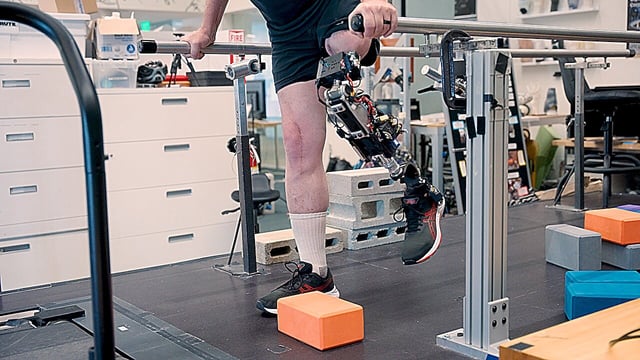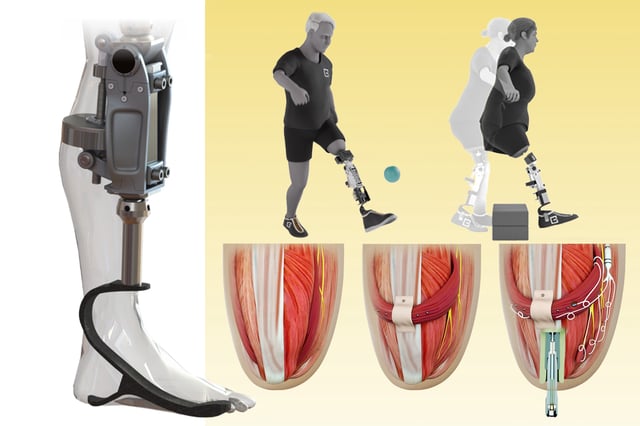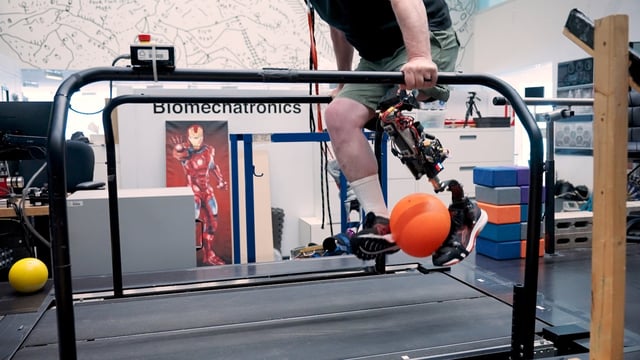Overview
- In a study published July 10 in Science, two above-knee amputees equipped with the OMP system outperformed AMI-only and traditional prosthesis users in walking speed, stair climbing and obstacle navigation.
- The OMP combines an agonist-antagonist myoneural interface with an e-OPRA titanium implant anchored in the femur to restore sensory feedback and mechanical stability.
- Participants reported a heightened sense of embodiment, perceiving the prosthetic knee as part of their own body rather than as an external device.
- Brigham and Women’s Hospital has begun performing AMI surgery routinely for below-knee amputees, establishing the technique as a growing standard of care.
- The research team is preparing larger clinical trials aimed at securing FDA approval for commercial use within about five years.


